Jira Service Management vs ServiceNow
ServiceNow and Jira Service Management are the two dominant platforms in the ITSM software space, together holding well over half of the market.
But, despite sharing a core use case, each platform is aimed at a distinct type of organization.
To pick the right one for your specific needs, we鈥檒l need to take account of a range of factors, including the scale of your service portfolio, your available resources, the size of your IT team, and any technical requirements you have.
In this guide, we鈥檒l be covering everything you need to know, across a range of functional and non-functional considerations. We鈥檒l also see a little but of how 黑料正能量 stacks up when it comes to managing ITSM workflows.
Let鈥檚 start with the basics.
Overview
We know that both JSM and ServiceNow are primarily used to manage internal IT services. Let鈥檚 take a broad look at where each platform sits within this niche.
What is ServiceNow?
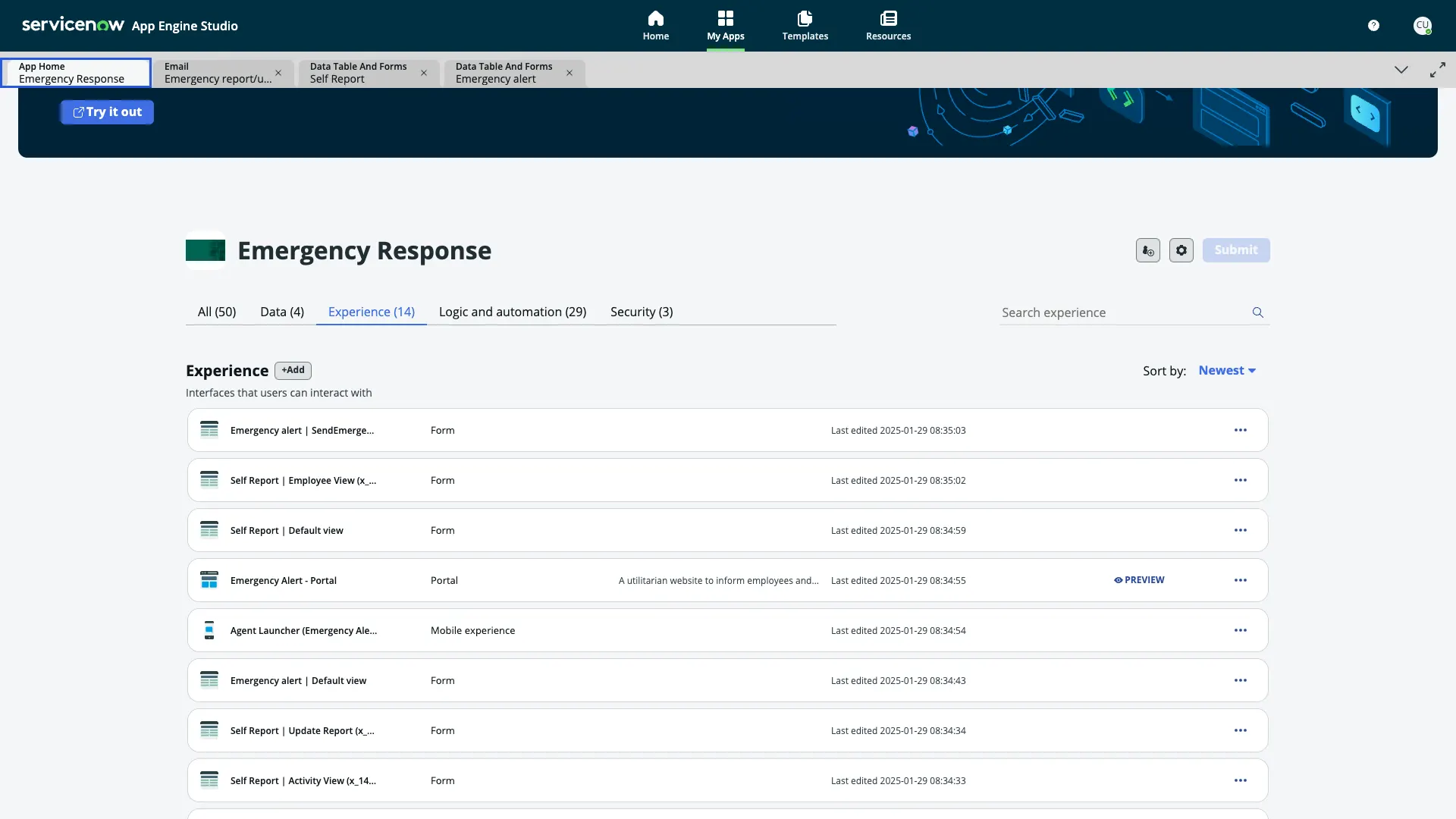
ServiceNow is by far the larger of the two platforms, accounting for almost half of the ITSM market by itself.
It鈥檚 primarily optimized for large enterprises with complex service portfolios. It鈥檚 established itself as the leading vendor here by offering extensive customization and configurability, as well as out-of-the-box tools for a huge range of common workflows.
However, this also comes along with some clear downsides. Most notably, smaller teams might find the capabilities excessive for their needs, or that ServiceNow requires too much time and resources to implement and maintain.
Take a look at our round-up of the top ServiceNow alternatives .
What is Jira Service Management?

Part of the wider Atlassian ecosystem, Jira Service Management is a service desk platform, aimed at helping IT teams to deal with various types of requests and other submissions.
For example, handling the likes of change control, asset management, internal ticketing, and service request management. In particular, it鈥檚 a great option for Agile or development-heavy IT teams that need to interact with the wider business in an efficient manner.
While still an extensive, feature-rich platform, it offers a narrower scope compared to ServiceNow. It鈥檚 also generally somewhat less customizable.
On the flip side, it generally requires less time and effort to implement than ServiceNow. Many teams also find that their end-users find JSM easier to use, further lowering its relative time-to-value.
Check out our guide to the top Jira Service Management alternatives to learn more.
Let鈥檚 drill into some of these ideas in a little bit more detail
Target users, pricing, and implementation
Now that we have a basic understanding of where each platform sits in the market, let鈥檚 break things down more granularly.
Target usage
First off, we can consider the types of organizations, workflows, and end-users each platform targets.
ServiceNow
As we said a second ago, ServiceNow is primarily aimed at the enterprise market. More specifically, it鈥檚 tailored towards organizations with extensive, ITIL-aligned ITSM workflows, especially in heavily regulated industries like finance or healthcare.
According to their own estimates, ServiceNow is used by 85% of the Fortune 500 list of the USA鈥檚 largest companies.
It鈥檚 available as both a cloud-based and on-premises solution. Each one is offered modularly, so customers are able to pick and choose the specific workflows and processes they want to handle within the platform.
Another key characteristic of these kinds of companies is the scale and maturity of their IT departments. That is, they鈥檒l generally have the resources and capacity for larger, more complex implementation projects.
Jira
Jira targets a slightly different market segment. Compared to ServiceNow, it鈥檚 a more viable option for small to midsize companies, although this doesn鈥檛 preclude enterprises from using it.
Rather than targeting based on organizational size, JSM is generally optimized for a certain type of IT team. That is, those with Agile or DevOps focused workflows, or other teams where internal development forms a large part of daily workloads.
For instance, a large proportion of users are start-ups or larger technology and software companies.
As it鈥檚 generally Agile and DevOps-aligned, JSM can require less implementation, especially in organizations that already adhere to one of these methodologies.
Pricing and implementation
From what we鈥檝e said so far, you may have already gathered that pricing is one area where these two platforms diverge quite significantly.
ServiceNow
Unfortunately, ServiceNow does not offer publicly available pricing. Instead, all quotes are provided on a custom basis.
What we do know is that this is dependent on several factors, including user volumes, required capabilities, and more specific deployment, configuration, and implementation requirements.
ServiceNow themselves claim that this can be an affordable option for organizations of all sizes, but many reports place their platform at the higher end of the ITSM market, both in terms of up-front costs and time-to-value, especially for smaller teams.
There is also no free tier for ServiceNow.
As we鈥檝e alluded to already, ServiceNow may require a comparatively lengthy implementation process, the costs of which will also need to be factored in. Unfortunately, this is not something that鈥檚 easily generalized.
Jira
Jira offers much more transparency around pricing. There are two fixed tiers, as well as a free version for up to three agents and custom enterprise pricing. Paid licenses bill on a per-agent basis, starting from $23.80 per month.
JSM鈥檚 pricing is also potentially quite scalable, with discounted licenses for larger numbers of agents.
However, it鈥檚 also worth noting that certain key pieces of functionality, like incident management, change management, or AI capabilities, are reserved for the more expensive licenses.
Different license tiers also impose usage-based restrictions, including those relating to data storage, automation runs, or email notifications.
From an implementation point of view, users typically require that JSM requires less time and effort, especially in organizations that already rely on the Atlassian ecosystem.
Managing ITSM workflows
Now that we鈥檝e covered each platform鈥檚 market positioning in more detail, we can move on to more functional considerations.
Here鈥檚 how each one compares across key clusters of features.
Data
First of all, let鈥檚 think about how we can interact with data in each platform.
ServiceNow
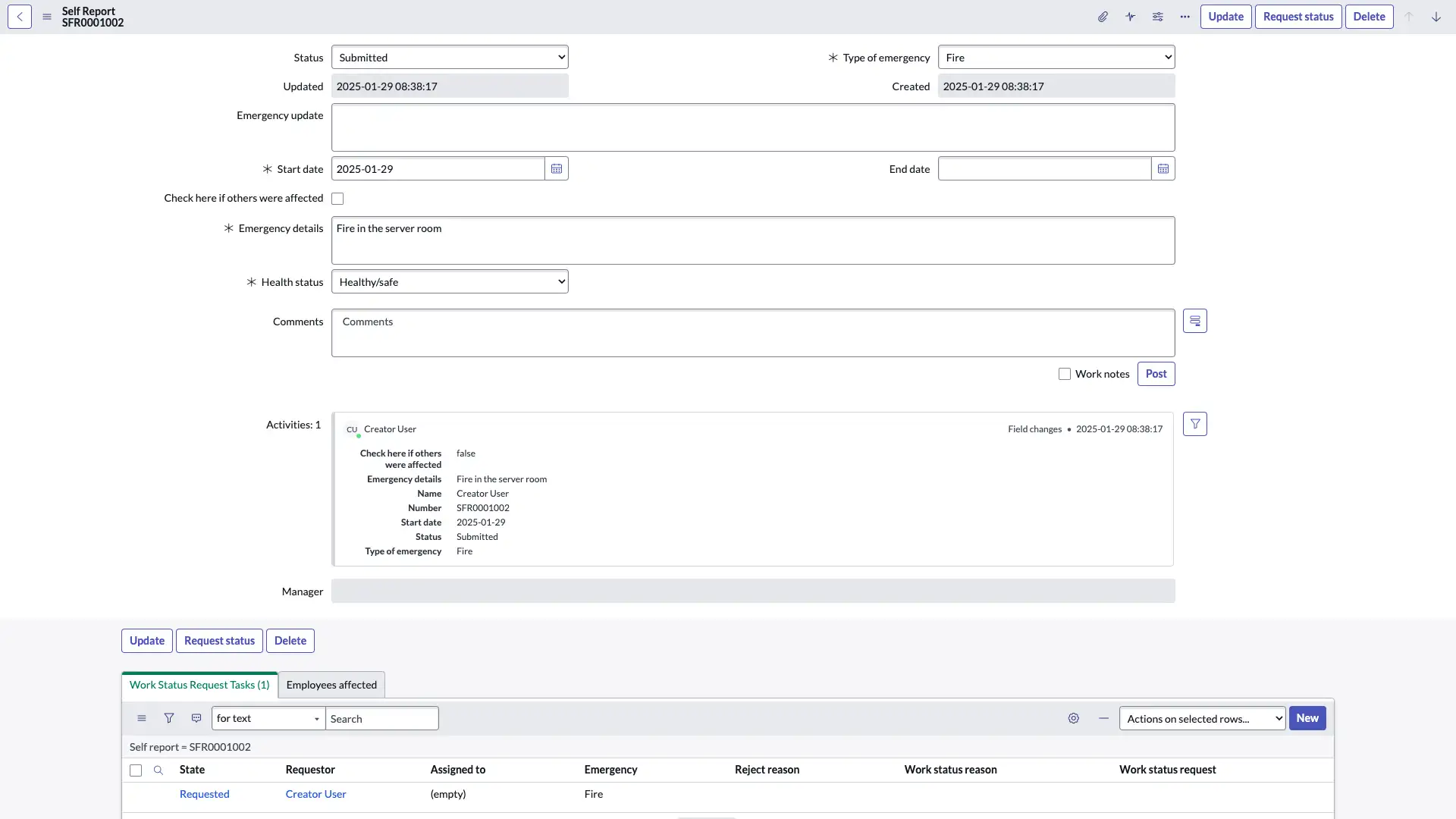
ServiceNow is underpinned by a proprietary database architecture called the Common Service Data Model (CSDM). This is a tabular, relational system, that will be broadly familiar to most IT professionals. This is powered by RaptorDB in newer versions of the platform.
CSDM enables us to define relationships between key data objects across our service portfolio, such as configuration items, business capabilities, assets, or service catalog entries.
Most interactions with this in the back-end are visual, using list and table views or report-building tools, rather than manual querying with raw SQL. You can also query stored data programmatically using GlideRecord, ServiceNow鈥檚 scripting tool.
ServiceNow offers extensive connectivity for external databases via enterprise-grade APIs or by utilizing JDBC and MID servers.
This provides a large degree of flexibility for enterprise users that need to access existing data assets, with the caveat that it will take a relatively high amount of technical expertise to configure.
Jira
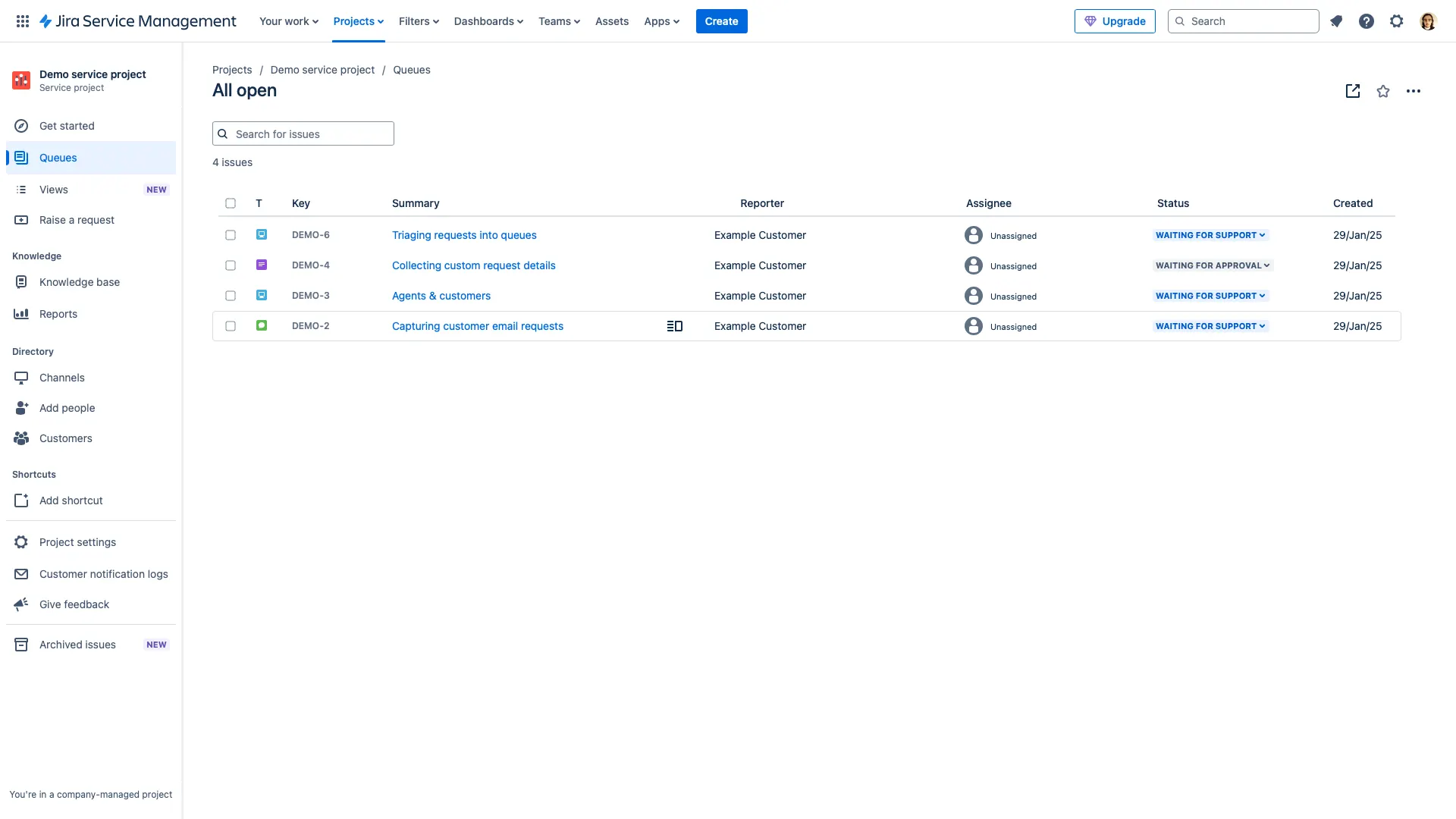
By default, cloud-based deployments of Jira Service Management utilize a Postgres database. On-prem deployments support alternative database systems, like MySQL or Oracle.
This provides a high degree of scalability and performance, as well as ACID compliance. Postgres is also a strong option for this type of use case, as it offers a comparatively high degree of flexibility, including JSON data types for semi-structured storage.
Unlike ServiceNow, JSM doesn鈥檛 natively offer JDBC or ODBC support. However, we still have a number of options for integrating with external databases. One is utilizing plug-ins from Jira鈥檚 large community of third-party contributors.
Alternatively, using a separate Atlassian Data Lake license, we can achieve much of the same functionality when querying external data. Compared to ServiceNow, this might offer somewhat less flexibility, but we can also expect less extensive implementation work.
Similarly, we have extensive options for connecting to external tools via APIs or Jira鈥檚 wide range of native integration options.
App building and UI design
Next, we can think about how we can use each platform to create and configure end-user interfaces for handling interactions with our IT service data. Once again, this is a key are where our two options diverge quite substantially.
ServiceNow
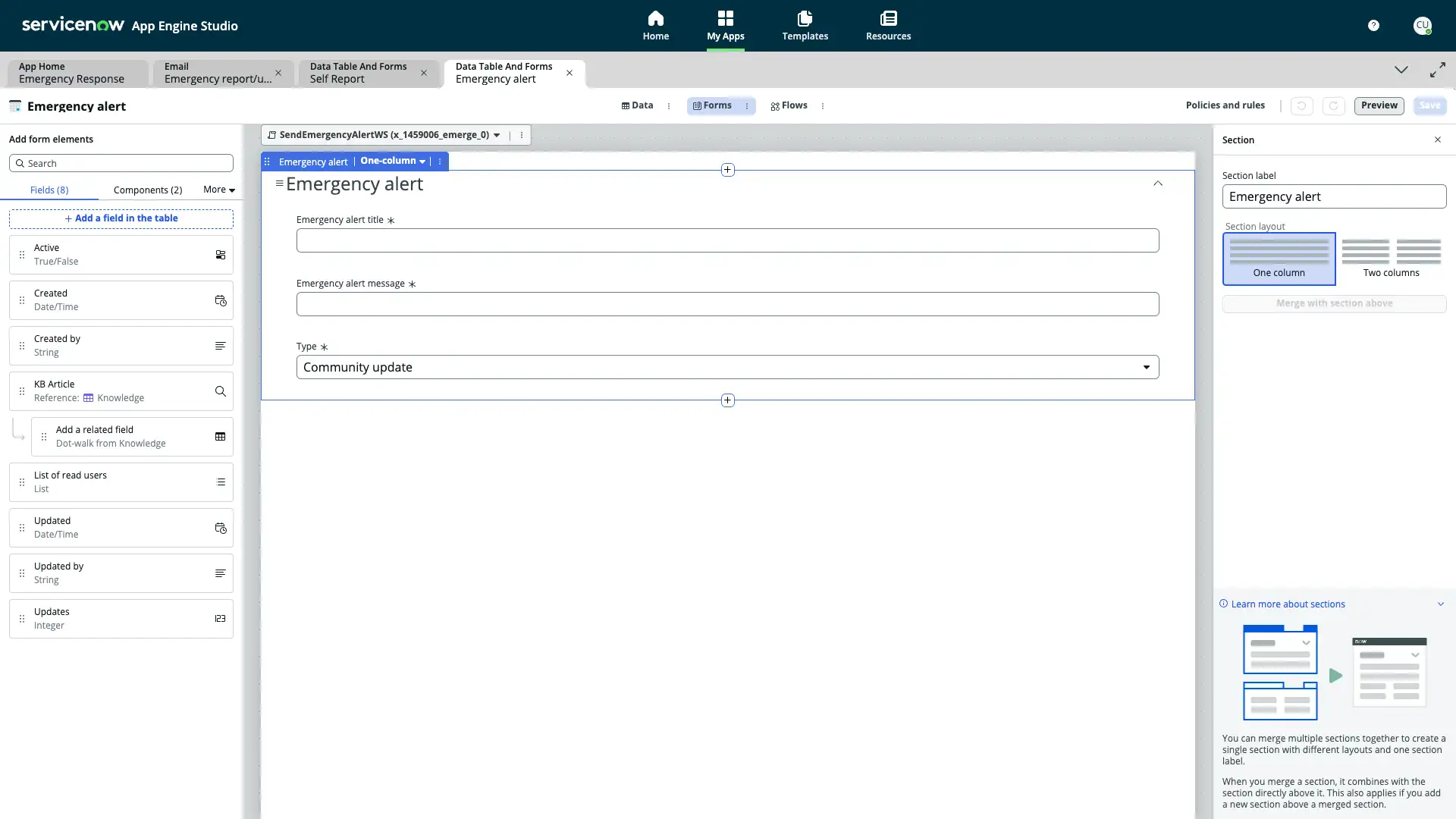
When it comes to building end-user solutions, ServiceNow is one of the clear leaders in this space.
We can break this into two categories. Firstly, for core ITSM tasks we can use the highly customizable Service Portal, Agent Workspace, and UI Builder tools to build common solutions like forms, ticketing systems, knowledge bases, and reports with drag-and-drop.
There鈥檚 also a high degree of reusability here, including custom widgets, app actions, and scripting.
On top of this, ServiceNow offers its own proprietary low/no-code environment in the form of App Engine Studio, which enables non-developers to ship custom applications. There鈥檚 also Mobile Studio, the equivalent for building mobile apps.
For developers wishing to build custom apps for the ServiceNow ecosystem, a dedicated IDE for more advanced use cases.
Jira
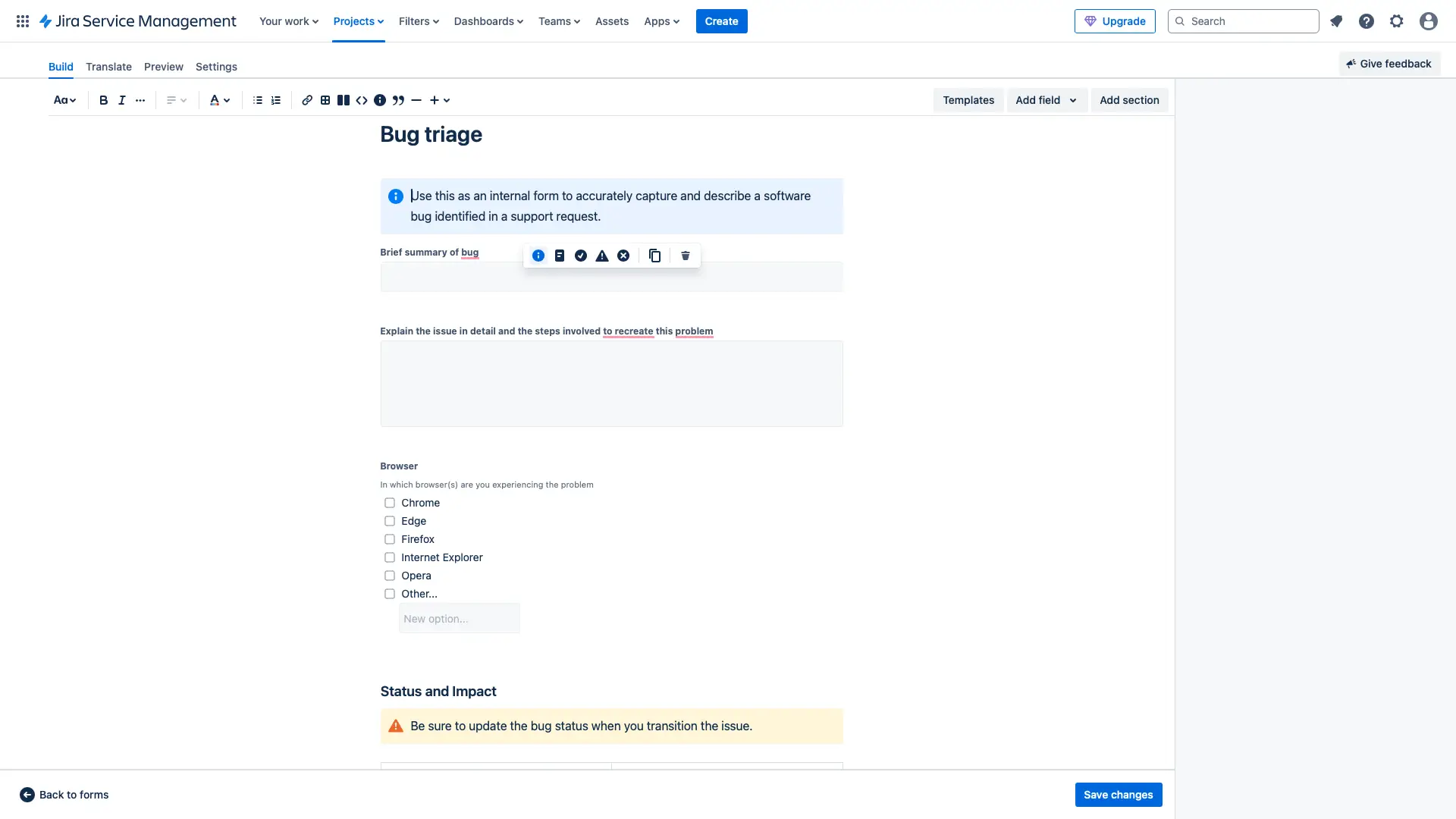
Jira Service Management still offers a relatively high degree of configuratbility and customization for end-user interfaces, but it nonetheless falls short in this regard compared to ServiceNow.
For one thing, it does not offer a full no/low-code app builder in the way that ServiceNow does. However, as we鈥檒l see in a second, there are visual tools for automating workflows.
Within its core service desk offering, JSM still offers a large degree of configurability. Experiences for creating custom ticketing forms or agent views are relatively streamlined, including adding our own custom data fields.
We can add custom HTML, CSS, or JavaScript via widgets to further add functionality to our service interfaces.
There鈥檚 also a high level of integration with the Atlassian Marketplace for extending JSM鈥檚 functionality. For example to implement more niche solutions, like time tracking or other reporting tools for your service colleagues.
Automations
Naturally, the ITSM software market is one where automation capabilities are a key consideration when researching platforms.
ServiceNow

Like app-building, ServiceNow is a much more comprehensive solution for automating tasks within IT departments.
For basic ITSM workflows, there鈥檚 the Flow Designer - a no-code, visual interface for defining rule-based automations that are triggered by defined events. Helpfully, this includes branching and looping, meaning we can create powerful rules with relative ease.
We can also use Integration Hub to trigger actions in external platforms based on ServiceNow events.
Separately from this, ServiceNow offers Automation Engine, a suite of tools for end-to-end process automation, including RPA. For example, we can configure bots to scrape data from legacy systems, using AI tools.
Lastly, ServiceNow also supports more complex automations through custom JS scripting within the platform. This could be a powerful addition in many cases, although you鈥檒l obviously need the development skills to take advantage of it.
Jira

Natively, JSM鈥檚 automation capabilities are more tightly focused on its core service desk use case. These are also generally more streamlined, enabling less technical colleagues to ship working automated solutions without requiring much custom code.
Automation for Jira is a feature across all Jira products that鈥檚 used to create If-Then rules that can be triggered by in-platform events. For example, assigning tickets, sending notifications, or linking issues.
It also integrates with the wider Atlassian ecosystem, including Confluence and BitBucket, along with a wide array of third-party platforms and APIs.
Separately from this, we can use JSM鈥檚 Workflow Automations feature to automate transitions for tickets and issues, using a state machine-based approach.
We can also expand these automation capabilities using the Atlassian Apps Marketplace. For example, there are working solutions for adding custom scripting or connecting to dedicated automation platforms like Microsoft Power Platform.
AI
In the past couple of years, we鈥檝e seen SaaS tools across most industries rushing to implement AI features. However, the scope of this can vary quite widely. Let鈥檚 check out how ServiceNow and JSM approach AI capabilities.
ServiceNow
ServiceNow offers extensive AI functionality through its Now Intelligence suite. One of the most exciting features here is the Virtual Agents tool, which allows teams to set up AI-powered chat bots that can handle simple service requests autonomously.
For example, password resets or knowledge article recommendations.
Another area where ServiceNow is particularly impressive is analytics and predictive insights. For example, anomaly detection, bottleneck identification, and forecasting. You can even use ML to assign tickets to agents based on previous behavior in the platform.
As noted earlier, we can leverage AI tools across ServiceNow鈥檚 process automation solutions.
For enterprise users, ServiceNow integrates with external models, including Azure AI, AWS, or even custom LLMs.
Jira
Atlassian has also launched several key automation features within JSM, in the form of Atlassian Intelligence. This leverages a combination of internally developed models and OpenAI tools.
They鈥檝e recently added virtual service agents. These are NLP-powered chatbots that are also available in external channels like Slack or Teams. This is a great option for less technical teams, as you can set up an agent with no code, using a visual flow-chart editor.
Notably, these can also be trained on past ticket data, as well as connect to knowledge articles in Confluence.
Arguably, JSM is not as strong on predictive AI functionality. For example, there鈥檚 no native anomaly detection, although some form of solution may be achievable with third-party integrations.
Similarly, JSM offers less extensive native support for external LLMs compared to ServiceNow, but some workarounds are reported using third-party tools.
Out-of-the-box workflows
Lastly, we can consider each platform in terms of its out-of-the-box ITSM workflows. That is, once the platform itself is rolled out, how easily can colleagues in the IT team set up key use cases?
ServiceNow
Despite its reputation for laborious implementation, ServiceNow offers fully usable workflows for a range of ITSM use cases with minimal configuration. These are closely ITIL-aligned, including asset management, change request management, configuration management, and more.
These are generally ready to use, although they still offer a high degree of flexibility and configuration within their existing structures.
A helpful edition to this is pre-configured approval processes, SLA policies, and automation actions, alongside AI suggestions for how to make these fit your more specific needs.
However, it鈥檚 worth noting that while this opinionated approach is great for large IT teams with ITIL-aligned processes, it may be of more limited use in other cases. So, smaller IT teams might be more likely to need to build out their own custom workflows from scratch.
Jira
JSM takes a slightly different angle on out-of-the-box workflows. Rather than read-to-deploy workflows, it offers a range of customizable solution templates, including for use cases such as general IT service management, or change, problem, and incident management.
Templates are also available for a range of non-ITMS use cases.
These provide the core structure of the relevant service, but more work is required by end users to set up things like approval workflows, request structures, or routing and categorization rules.
However, counter-intuitively, this is potentially a better option for IT teams in smaller organizations. This comes down to two things. Firstly, there is less of a need for tightly ITIL-aligned workflows in these cases, so you may have to start from scratch in ServiceNow anyway.
Second, many less technical users find customizing Jira鈥檚 templates easier than building workflows in ServiceNow.
So, this is a good option for smaller teams that need to iterate over their ITSM workflows in order to reflect changing needs.
Powering ITSM workflows with 黑料正能量
黑料正能量 is the open-source, low-code platform that empowers IT teams to turn data into action.
With extensive external data support, autogenerated UIs, custom RBAC, optional self-hosting, low-code automations, free SSO, and much more, it鈥檚 the perfect solution for handling everything from IT incidents to change control processes.
Start building with our free change control template